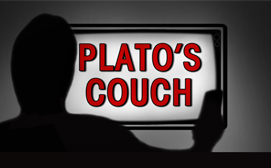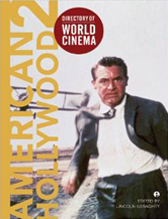
REVIEW: The Last American Freak Show
The freak show has long been a source of fascination within American popular culture and folklore, from the early travelling carnivals and sideshows through films such as Tod Browning’s classic, Freaks (1932), to more contemporary incarnations such as the Jim Rose Circus.
Nowadays however, in this neo-conservative age of political correctness and scientific/medical advancements, the traditional travelling freak show has itself become something an anomaly, a voyeuristic relic of an exploitative cultural past.
Setting out on tour with the troupe of the ‘999 Eyes’ across America’s west coast, British filmmaker Richard Butchins frames his documentary-cum-road movie as a socio-political exploration of the ‘freak show’ within the 21st century.
Initially, Butchins, who also narrates the documentary, seems less than impressed with the troupe and its performers – Lobster Girl, Lobster Boy/Black Scorpion, a Dwarf, Giant, Elephant Man, and the Half-Woman – describing their chaotically under-rehearsed and off-key show as “grotesque”; a curious mix of “Blair Witch and Animal House”.
 And yet as the tour rolls on, the show’s discordant acts begin to seem relatively insignificant compared to the high jinks of life on the road: a bio-diesel powered remodelled yellow school tour bus that’s constantly in need of repair, the random thieving of grease from highway diners to fuel it, runaway canines, a meeting with a self-important horror film director, and the cast whose increasingly drunken behaviour threatens to tear the troupe apart.
And yet as the tour rolls on, the show’s discordant acts begin to seem relatively insignificant compared to the high jinks of life on the road: a bio-diesel powered remodelled yellow school tour bus that’s constantly in need of repair, the random thieving of grease from highway diners to fuel it, runaway canines, a meeting with a self-important horror film director, and the cast whose increasingly drunken behaviour threatens to tear the troupe apart.
It’s these moments, more than actual show (or its performers) that really takes centre stage in Butchins’ work, and while these misadventures lend the film a humorous tone, the shift in focus tends to work against the film’s initial premise.
With the exception of a few all-too-brief moments in which the ‘freaks’ attempt to articulate to Butchins the significance of the show to their sense of identity, most of the interviews and revelations derived from cast members remain bound up with stories of their various disabilities.
As a consequence the film struggles to tease out any real sense of character or history of the performers beyond their own ‘freakish-ness’ – a strategy that may garner audience sympathy, but actually prevents us from seeing the cast as ‘human’ after all.
It’s an approach made all the more problematic by Butchins’ tacit mention of his own disability, which he then fails to discuss or quantify in greater detail, an omission which seems in stark contrast with his approach to the performing ‘freaks’.
That’s not to say however that Butchins’ work can be categorised as a simple exercise in exploitation – far from it – and as with Tod Browning’s film, the director successfully dehumanises the show’s ‘able-bodied’ proprietors – who are increasingly shown giving scant regard for the special needs of the shows performers.
Ultimately, The Last American Freak Show sympathises with the ‘freaks’ insofar as the show allows them a sense of place and a means of creative expression, even if it struggles to provide a more critical reflection on the belief that, as one performer suggests, “all forms of performance are exploitation”.
That may be true, but as Butchins’ film bares testament, there’s clearly there’s a hierarchy of exploitation within the performative realm that still warrants further examination.





RSS feed for comments on this post. TrackBack URI